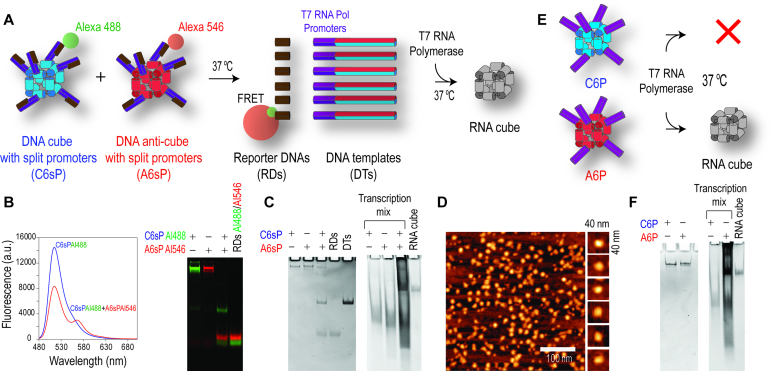Figure 2.
Isothermal re-association of complementary DNA nanoparticles activates co-transcriptional production of RNA nanoparticles. (A) Schematics of re-association between the complementary DNA cubes and anti-cubes carrying split and therefore inactive T7 RNA polymerase promoters. The re-association of DNA cubes in transcription mixture releases DNA templates with active promoters and allows for co-transcriptional assembly of RNA cubes. (B and C) Native-PAGE and fluorescence experiments visualizing re-association of shape-switching purified DNA cubes and DNA anti-cubes, resulting in formation of DNA templates with activated T7 RNA polymerase promoters and further co-transcriptional assembly of RNA cubes. (D) Co-transcriptionally assembled RNA cubes eluted from native-PAGE and imaged by AFM. (E) RNA cubes can only be formed co-transcriptionally using DNA anti-cubes decorated with six complete T7 RNA Polymerase promoters (A6P) and not from DNA cubes (C6P) due to the directionality of the promoter sequences. (F) Native-PAGE showing the co-transcriptional production of RNA cubes from DNA anti-cubes with six promoters. Following 4 h of incubation, all transcription mixtures were treated with DNase to remove any residual DNA.

